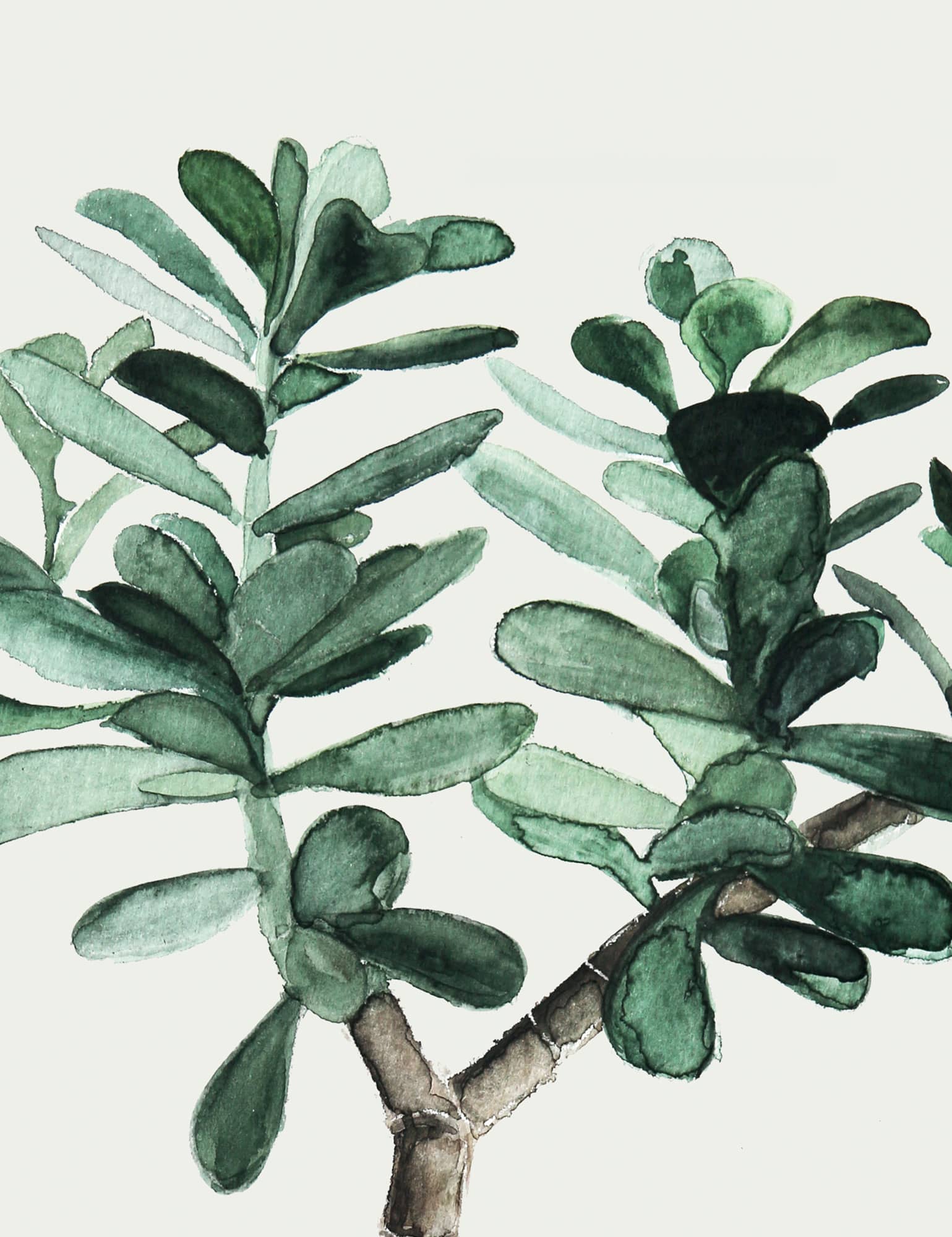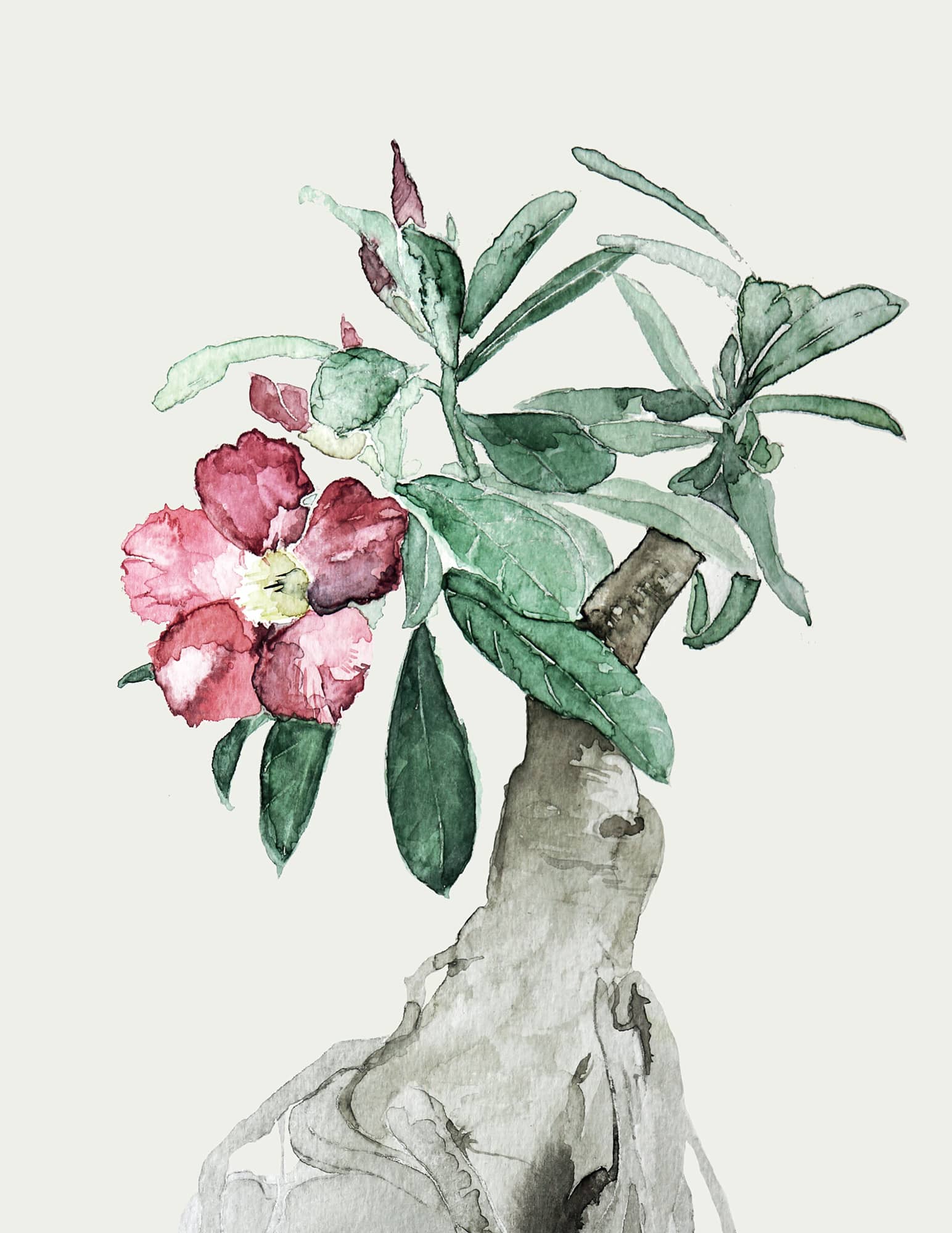URBAN BOTANICS
AN INDOOR PLANT GUIDE FOR MODERN GARDENERS
MAAIKE KOSTER
and
EMMA SIBLEY

INTRODUCTION
Growing plants in an urban environment can be the ideal way to make a small space feel open and alive, and with a surge in the popularity and availability of house plants it is increasingly easy for us to adorn our homes with them. In recent years we have seen a growing trend for house plants as more and more people appreciate the benefits of being surrounded by greenery in the home. All around us we can see a multitude of fashion and lifestyle campaigns styled using tropical palms, ferns and foliage, and there is also an increased abundance of places selling plants for the modern gardener.
In the past few years there have been some real changes in attitudes towards house plants. Instead of giving a bouquet of flowers, people now exchange living plants perhaps an arrangements of succulents in small pots, or a plant they have propagated themselves, such as the easily-grown spider plant. Once usually seen limp in the corner of a tired office or apartment, today spider plants seem to be taking centre stage along with the likes of palms and rubber plants, all of them bringing the outdoors into a modern home.
Green foliage plants are certainly growing in popularity the painterly leaves of calathea, a towering rubber plant or delicate maidenhair fern but perhaps leading them all are cacti and succulents. This could be down to the notable low maintenance of this group of plants, or to the sheer variety and unusual-looking selection that has become available. The small size of many of them also makes them useful in a restricted space, allowing them to be arranged neatly and popped on a window ledge, for example.
In a time where living within an urban environment rarely involves having access to a lush garden, buying house plants can be the perfect solution. People are realising that you dont have to have a full garden to show off your green fingers. Our enthusiasm for filling our apartments and studios with potted plants has proven the urban gardener can have as much success as someone with a bountiful outdoor space, and theres the added bonus that you can take your plants with you if you move.
Dont believe in the myths of green fingers or black thumbs; everyone can grow house plants! We hope you can be inspired by the variety of house plants there are to choose from, as this book guides you through succulents, cacti, flowering and foliage plants and towards being the truly successful modern gardener.
SUCCULENTS
Adenium obesum
Desert Rose
Africa and Arabia
An evergreen succulent shrub that enjoys winter warmth, the desert rose thrives in a conservatory or on a draught-free windowsill. The plant forms a bulbous, swollen base from which bare, woody stem protrude, with clusters of green, leathery leaves at the top.
Ample sunlight and warmth throughout the year are the perfect conditions for the desert rose, encouraging the production of flowers during the summer months. When it comes to watering, make sure that you water regularly from spring to autumn but during the winter resting period keep almost dry, only watering once every few weeks.
The beauty of these plants is when they flower. The tubular, singular flowers, in bright pinks and reds, form a vibrant contrast to the bright green leaves.
DESERT ROSE
ADENIUM OBESUM
Aeonium Sunburst
Copper Pinwheel
Canary Islands
This branching succulent grows to form large variegated rosettes of green and yellow leaves on the ends of woody stalks that can sometimes reach 50 cm/20 in high. The edges of the leaves will sometimes show a pink hue; this will increase with exposure to sunlight and also when the plant is exposed to extremely cold conditions.
The copper pinwheel requires full sun to light shade. Be careful when placing plants in direct sunshine, however, as this can damage and brown the leaves; you may also see them start to curl up to prevent excessive water loss.
Most aeoniums are dormant in the summer months and during this time may not require any water except if the leaves seem to start to shrivel, in which case water sparingly. During the growing period of winter to spring they will thrive in a moist, shady spot. Water once a week but allow the compost to completely dry out between waterings as aeoniums are quite prone to root rot.
COPPER PINWHEEL
AEONIUM SUNBURST
Aeonium volkerii
Tree Houseleek
Canary Islands
This houseleek forms a compact branching plant with light green, fleshy leaves that have distinctive, bright red margins. The leaves form fleshy rosettes of four to five layers.
Unlike most succulent plants, A. volkerii does not enjoy the dry desert conditions that you would expect, favouring more shady and moist conditions. During the summer months if the atmosphere is too hot and dry you may notice the leaves shrivelling, an indication that the plant is need of water. Although preferring a lightly shaded spot, some exposure to sunlight will enhance the colour of the plant, increasing the red tones on the edges of the leaves.
During the winter months this aeonium should only be watered when the soil has completely dried out. Never allow the plant to stand in water at any time of year, as it is very prone to root rot.
Repot every two years in the growing season, which is late winter or early springtime.
TREE HOUSELEEK
AEONIUM VOLKERII
Agave americana
Century Plant
South America
There are over 300 species of agave, the most popular being A. americana or century plant so-called because of the false belief that it will flower only once a century. Agaves have rosettes of elongated, blue-green, often toothed leaves which are notoriously strong.
These desert plants favour an abundance of strong sunlight. During the summer months water with warm water and do not allow the compost to dry out; however, during the winter, water very rarely as the plant goes into hibernation mode then.
As it is a very slow growing plant you can keep your agave inside for many years, but you may want to move it outside in summer when the spines on the leaves start to get too large, as they can become quite unruly.
Agaves are difficult to grow from seed and will rarely flower indoors, but they are very easy to propagate from offsets. They produce many of these, which root whilst still attached to the parent. These can then be pulled off and potted up separately, giving you many agaves from your initial plant.














